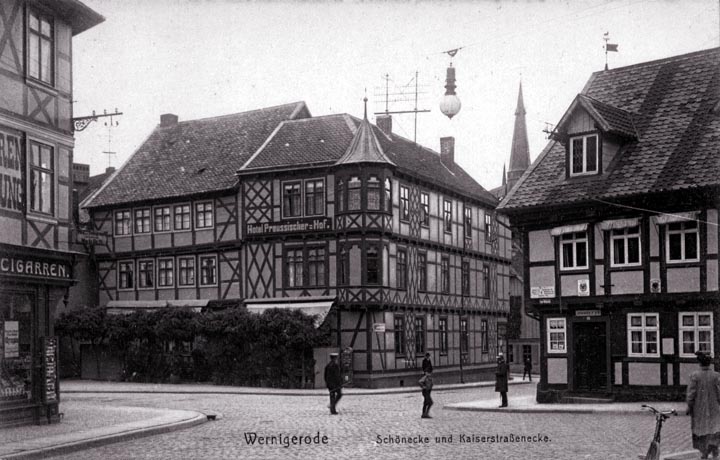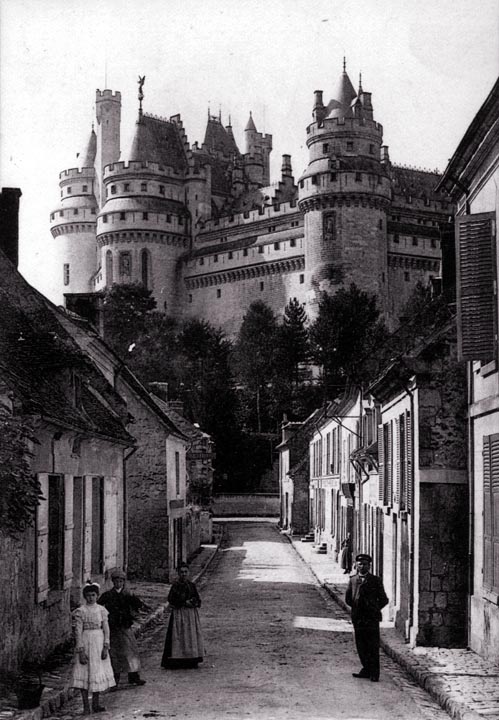
This neighborhood has a freshly-built appearance (the roof lines have not sagged), which means that it was probably constructed right around 1900. By that time it had become unusual to build streets any narrower than this.
Notice the architectural harmony and variation. Notice also the barely visible telephone wires and their supports. Not so long after this photograph was taken, Europe began to bury its utility lines, and today most European cities have their utilities mostly or entirely underground. In addition to improving reliability and reducing maintenance costs, this greatly improves the appearance of an area. Notice, too, that absent parked cars, the pretty sweep of the corner curbs can be fully appreciated. The paving appears to be entirely of stone. While cobblestone paving is very attractive, because of the rich texture it imparts, it is really not practical for wheeled vehicles of any sort. It is comparatively unpleasant to bicycle over stone. The use of handcarts is also impeded, and the eggs tend to get broken by the time you have them home. While asphalt paving in good condition is a nearly idea surface from the standpoint of any wheeled contraption, it is hardly attractive. The best, and of course most expensive, approach is that taken by the San Marco district of Venice, where most of the paving is in the form of large, smooth stone blocks laid tightly against one another. These provide a rolling surface that is nearly as good as asphalt and are very attractive to boot. We may not often achieve this ideal, but it worth keeping in mind. Of course, very narrow streets are cheaper to pave, whatever the means, and that is why we find beautiful stone paving in the very narrow streets of Venice.
|
 Next City Design Home
E-mail |